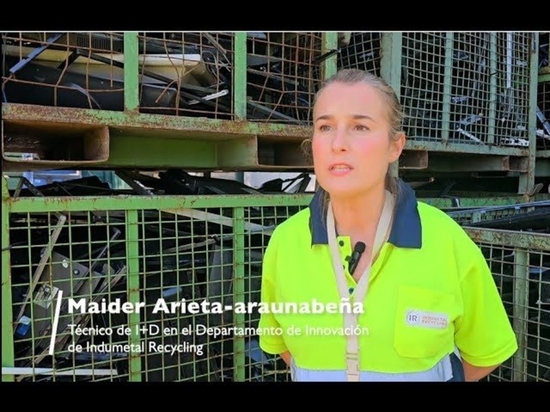
#Product Trends
TECHNOLOGY SERVING TEXTILE ECODESIGN
TECHNOLOGY SERVING TEXTILE ECODESIGN
TECHNOLOGY SERVING TEXTILE ECODESIGN
by Picvisa | May 12, 2023 | Textile recycling
ecosort picvisa in operation
The textile sector is in constant growth, and by 2025, 102 million tons of clothing are expected to be produced worldwide, representing a 63% increase compared to current production. Despite this, only 1% of recycled clothing today is turned into new garments.
RECYCLING AND TEXTILE ECODESIGN
Most of the clothing consumed is composed of a mixture of textiles, with polyester as the dominant fiber, making its subsequent sorting for recycling difficult. Add to this that clothing production requires large amounts of energy, water, and chemicals, and it becomes evident that the textile sector’s production chain needs to be reviewed and reformulated to produce more sustainable materials. This is where ecodesign comes into play.
It’s important to note that textile recycling not only has a positive impact on the environment but can also be an economic engine for local communities. According to a report from the Ellen MacArthur Foundation, the reuse and recycling of clothing and textiles could generate an additional economic value of over $150 billion annually for the global economy by 2050.
In this context, ecodesign emerges as a key solution to reduce the environmental impact of the textile industry and improve its sustainability, as well as becoming a strategic driver of the economy.
ECODESIGN: THE LIFE CYCLE OF TEXTILES
Ecodesign changes the way products are designed and generated, taking into account environmental impact at all stages of their life cycle. It involves a new way of designing and manufacturing products with a holistic approach, placing environmental impact as the main focus at all productive stages, from the extraction of raw materials to the use of garments and the end of their useful life.
The stages include the selection of sustainable and less environmentally damaging materials, reducing energy and water consumption during manufacturing, designing durable, repairable, and recyclable products, and managing waste and emissions throughout the entire process. PICVISA focuses on recycling.
Recycling worn-out clothing for reuse as new clothing is technically difficult due to the mixture of materials that make it up. Polyester is the most used fiber in clothing production, representing 54% of global fiber production, followed by cotton with a market share of 22%, according to data from the global nonprofit Textile Exchange.
The popularity of polyester is due to its low cost compared to natural fibers, making it a preferred option for fast fashion brands that prioritize low cost.
Although the plastic industry has developed techniques to break down pure polyester (PET) for decades, the mixed nature of textiles makes recycling one fiber without damaging the other difficult. This is where the importance of automation technology in textile recycling sorting lies.
AUTOMATED TEXTILE WASTE SORTING TECHNOLOGY
Automated textile waste sorting is a technology that uses cameras and sensors to identify and separate the different materials that make up textile waste. This technology can sort textiles by their type, color, and quality, enabling their recycling and reuse in a more efficient and profitable way.
Currently, there are automated sorting systems that use artificial vision technology and data analysis to identify and separate different types of textile materials. These systems are capable of working with a wide variety of materials, from natural fibers like cotton to synthetic fibers like polyester or nylon.
And a step beyond artificial vision is spectroscopy. Spectroscopy uses near-infrared (NIR) waves to identify materials or mixtures of materials. It has been used for several decades to separate packaging, plastics, and cardboard, although its use in textiles is more recent.
These technologies are integrated into PICVISA’s ECOSORT and make a huge difference, as demonstrated in the Spanish reference project Coleo Recycling, in La Coruña.
THE POTENTIAL OF ECODESIGN IN EUROPE
In Europe, automated textile waste sorting systems are already being used in countries such as Finland, Sweden, France, and Spain. According to a study by the University of Helsinki, automated sorting of textile waste can increase the recycling rate by up to 90%, demonstrating its great potential to improve the sustainability of the textile sector.
Therefore, to promote textile ecodesign within European territory through leading automated sorting projects, plants equipped for this purpose are needed, and there are very few at the moment.
Six European sites are currently equipped in this area, and six more projects are about to emerge, according to a report by Terra commissioned by Refashion. One of these six fully operational plants today is Coleo Recycling with PICVISA equipment.
With this last example, it becomes clear that automated sorting of textile waste is a crucial tool for implementing ecodesign in the textile industry. By identifying and separating the different materials that make up textile waste, new products can be designed that use recycled materials and minimize waste generation, leading to a more sustainable and circular industry.





